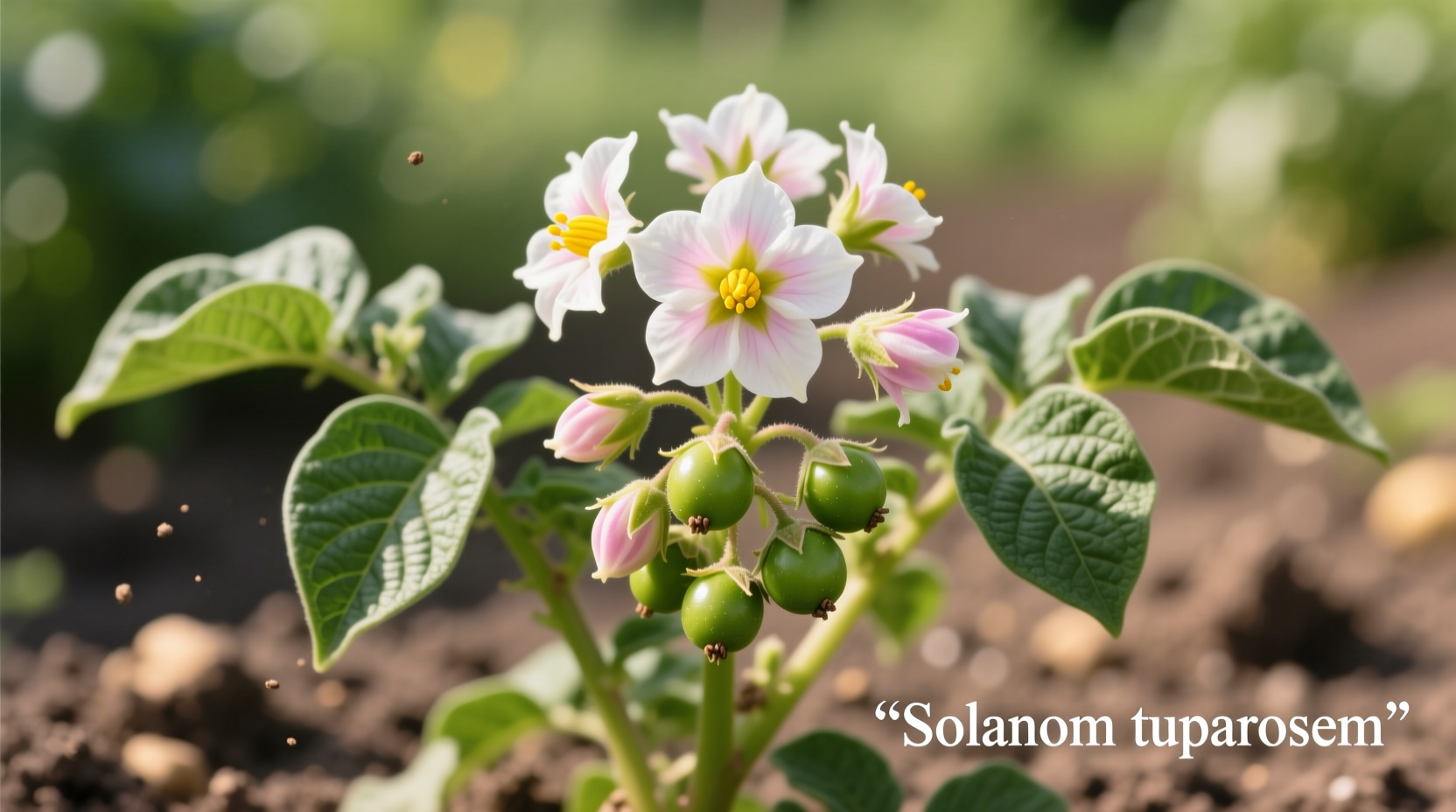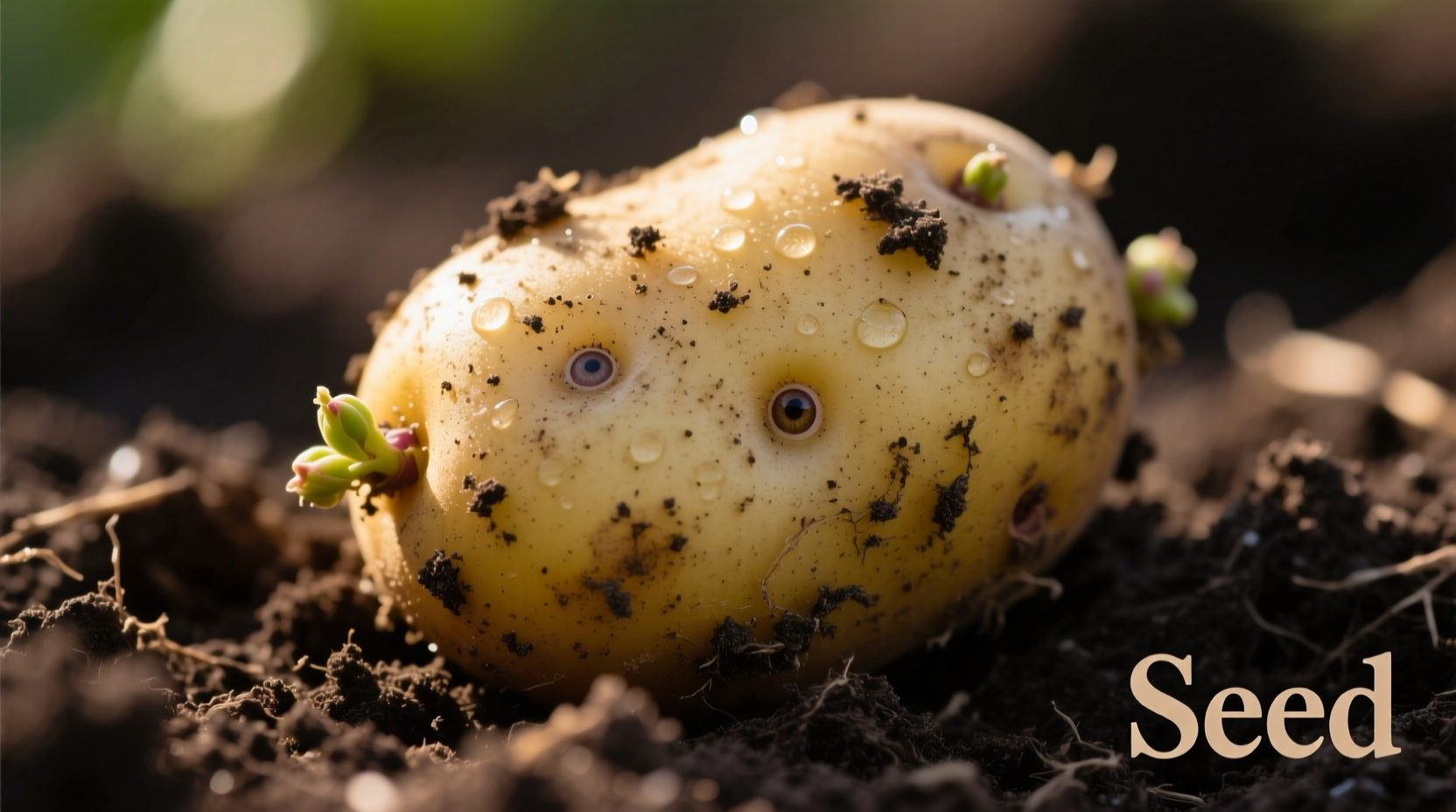Confused about potato seeds? You're not alone. Many gardeners mistakenly search for potato seeds, only to discover that the standard way to grow potatoes doesn't involve seeds at all. Let's clear up this common gardening misconception once and for all.
Why Potatoes Don't Work Like Other Vegetables
When you plant tomatoes, peppers, or cucumbers, you start with seeds. Potatoes break this pattern completely. As members of the nightshade family (Solanaceae), potato plants (Solanum tuberosum) do produce flowers and occasionally small green berries that contain true seeds. However, these true potato seeds behave very differently from the seeds of other garden vegetables.
The reason commercial growers and home gardeners don't use these seeds comes down to predictability. Potatoes grown from true seeds produce enormous genetic variation. You might get plants with different shapes, colors, disease resistances, and yields—making them unreliable for consistent crops. This is why the agricultural industry standardized on tuber propagation centuries ago.
Understanding Potato Reproduction: Tubers vs. True Seeds
Let's examine the two reproduction methods side by side:
| Propagation Method | How It Works | Used By | Time to Harvest |
|---|---|---|---|
| Tubers ("Seed Potatoes") | Planting small whole potatoes or cut pieces with eyes | 99% of commercial growers and home gardeners | 70-120 days |
| True Potato Seeds (TPS) | Planting seeds from potato berries | Plant breeders developing new varieties | 120-180 days (plus additional years for selection) |
The Reality of True Potato Seeds
While rare in home gardening, true potato seeds do exist. When potato plants flower successfully (which doesn't always happen, especially in cooler climates), they can develop small green berries resembling cherry tomatoes. Each berry contains several hundred tiny seeds.
According to research from the Oregon State University Extension Service, these seeds require special handling:
- They need light to germinate properly
- Require 65-75°F soil temperature
- Take 2-6 weeks to sprout
- Produce genetically unique plants
Plant breeders use TPS to develop new potato varieties with improved disease resistance or climate adaptability. The USDA Agricultural Research Service maintains potato seed banks for this purpose, preserving genetic diversity that might help combat future crop diseases.

Practical Guide: How to Actually Grow Potatoes
If you're looking to grow potatoes in your garden, forget about seeds and focus on proper tuber selection and planting:
- Choose certified seed potatoes - Never use grocery store potatoes, which may carry diseases or have sprout inhibitors. Certified seed potatoes guarantee disease-free stock.
- Chitting (pre-sprouting) - Place seed potatoes in a cool, bright location 2-4 weeks before planting to encourage strong sprouts.
- Planting depth - Plant seed pieces 3-4 inches deep in loose soil, eyes facing up.
- Hilling - As plants grow, mound soil around the base to protect developing tubers from sunlight (which turns them green and toxic).
- Watering - Maintain consistent moisture, especially during tuber formation (6-8 weeks after planting).
When True Potato Seeds Might Be Worth Considering
While not practical for most gardeners, true potato seeds offer some unique advantages:
- Disease resistance - TPS-grown plants often show greater resistance to soil-borne diseases that accumulate when planting tubers year after year.
- Long-term storage - Seeds can be stored for years without refrigeration, unlike tubers which require cool, dark conditions.
- Genetic diversity - For gardeners interested in developing locally adapted varieties, TPS provides genetic variation that tuber propagation cannot.
The Royal Horticultural Society notes that some heirloom potato varieties have been preserved through TPS when disease threatened their tuber stocks. However, they emphasize that this remains a specialized technique rather than standard practice.
Avoiding Common Potato Growing Mistakes
Based on data from university extension programs across North America, these are the top mistakes new potato growers make:
- Planting grocery store potatoes (risk of disease and poor performance)
- Planting too early in cold, wet soil (causes rot)
- Insufficient hilling (leads to green, toxic tubers)
- Overwatering during early growth stages
- Harvesting too early (small yields) or too late (damaged tubers)
Following proper planting techniques with certified seed potatoes gives you the best chance for a successful harvest. Remember that potatoes need well-drained soil and consistent moisture during tuber formation for optimal results.











 浙公网安备
33010002000092号
浙公网安备
33010002000092号 浙B2-20120091-4
浙B2-20120091-4